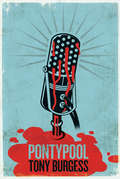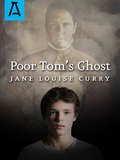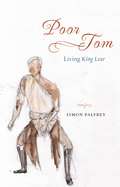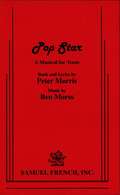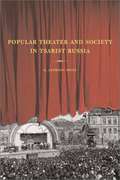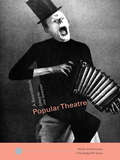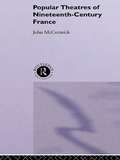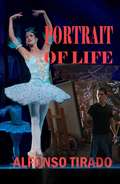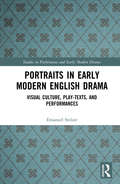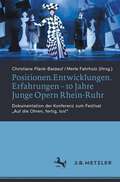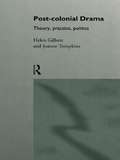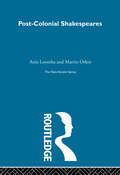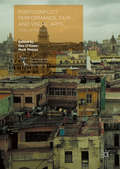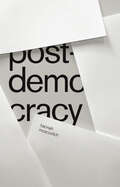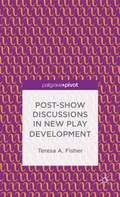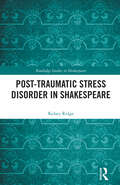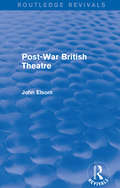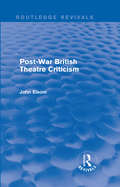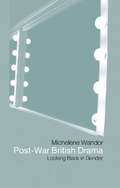- Table View
- List View
Ponteach, or the Savages of America
by Tiffany PotterPontiac, or Ponteach, was a Native American leader who made war upon the British in what became known as Pontiac's Rebellion (1763 to 1766). One of the earliest accounts of Pontiac is a play, written in 1766 by the famous frontier soldier Robert Rogers, of the Rangers. Ponteach, or the Savages of America is one of the only early dramatic works composed by an author with personal knowledge of the Indigenous nations of North America. Important both as a literary work and as a historical document, Ponteach interrogates eighteenth-century Europe's widespread ideological constructions of Indigenous peoples as either innocent and noble savages, or monstrous and violent Others.Presented for the first time in a fully annotated edition, Ponteach takes on questions of nationalism, religion, race, cultural identity, gender, and sexuality; the play offers a unique perspective on the Rebellion and on the emergence of Canadian and American identities. Tiffany Potter's edition is supplemented by an introduction that critically and contextually frames the play, as well as by important appendices, including Rogers' ethnographic accounts of the Great Lakes nations.
Pontypool
by Tony BurgessIn the sleepy town of Pontypool, Ontario, no one is safe from an epidemic so devastating it will leave you literally speechless.
Poor Tom's Ghost
by Jane Louise CurryPoor Tom's Ghost--dramatic, wholly convincing, a fascinating intermingling of the centuries--portrays a family whose uncertain bonds are tested and strengthened by a threat from the past.When the Nicholas family first sees the derelict old house near London that has been left to them in Aunt Deb's will, they are sadly disappointed. Thirteen-year-old Roger is the most disappointed, since, having moved place to place all his life with his gifted actor-father, he longs for some measure of stability. Then Roger and his father discover, under peeling wallpaper and rotted paneling, traces of a much older, more graceful house, and their misgivings disappear--until, one night, the house is filled with a sound of wild grieving that Roger traces to an empty room. Only Roger--and later his small stepsister Pippa--sees the ghosts, among them is that of Tom Garland, a well-known actor in Shakespeare's time. But Roger's father, playing Hamlet in the famous National Theatre, is caught up, unknowingly, in Tom's old tragedy. It is a frightened Roger who has to risk his life to find a way to mend the past before the present becomes its tragic echo.
Poor Tom: Living King Lear
by Simon PalfreyKing Lear is perhaps the most fierce and moving play ever written. And yet there is a curious puzzle at its center. The figure to whom Shakespeare gives more lines than anyone except the king—Edgar—has often seemed little more than a blank, ignored and unloved, a belated moralizer who, try as he may, can never truly speak to the play’s savaged heart. He saves his blinded father from suicide, but even this act of care is shadowed by suspicions of evasiveness and bad faith. In Poor Tom, Simon Palfrey asks us to go beyond any such received understandings—and thus to experience King Lear as never before. He argues that the part of Edgar is Shakespeare’s most radical experiment in characterization, and his most exhaustive model of both human and theatrical possibility. The key to the Edgar character is that he spends most of the play disguised, much of it as “Poor Tom of Bedlam,” and his disguises come to uncanny life. The Edgar role is always more than one person; it animates multitudes, past and present and future, and gives life to states of being beyond the normal reach of the senses—undead, or not-yet, or ghostly, or possible rather than actual. And because the Edgar role both connects and retunes all of the figures and scenes in King Lear, close attention to this particular part can shine stunning new light on how the whole play works. The ultimate message of Palfrey’s bravura analysis is the same for readers or actors or audiences as it is for the characters in the play: see and listen feelingly; pay attention, especially when it seems as though there is nothing there.
Pop Star
by Peter MorrisOne Act Musical / 5m, 16f / Interior / Westfield High School is the next stop for Pop Star, a nationally televised talent search that will make some lucky high school student the next American Idol. When the show's sleazy host and his put-upon assistant roll in with the cameras, the strain of competition pits friend against friend. Who will be chosen: Densie, the spoiled rich girl? Jessica, the Jewish rapper who is ashamed of her heritage? Chanel, an African-American whose white boyfriend is afraid to let people know they are in love? Before petty jealousies and racial tensions tear the school apart, the students realize that sticking together is more important than winning. Fast-paced and fun. Pop Star is propelled by an infectious pop rock score that includes 11 original songs.
Popular Musical Theatre in London and Berlin
by Len Platt Tobias Becker David Linton Len Platt Tobias BeckerIn the decades before the Second World War, popular musical theatre was one of the most influential forms of entertainment. This is the first book to reconstruct early popular musical theatre as a transnational and highly cosmopolitan industry that included everything from revues and operettas to dance halls and cabaret. Bringing together contributors from Britain and Germany, this collection moves beyond national theatre histories to study Anglo-German relations at a period of intense hostility and rivalry. Chapters frame the entertainment zones of London and Berlin against the wider trading routes of cultural transfer, where empire and transatlantic song and dance produced, perhaps for the first time, a genuinely international culture. Exploring adaptations and translations of works under the influence of political propaganda, this collection will be of interest both to musical theatre enthusiasts and to those interested in the wider history of modernism.
Popular Theater and Society in Tsarist Russia
by E. Anthony SwiftA detailed and fascinating account of the emergence of popular theater in Russia out of a synthesis of fairground shows, elite theater tradition, folk performance, and the new possibilities of mass culture. Swift shows how the public seized upon theater as an art form, as entertainment, and as an instrument of popular education.
Popular Theatre and Political Utopia in France, 1870—1940
by Jessica WardhaughThis book is the first study of popular theatre in France from left to right, exploring how theatre shapes political acts, ideals, and communities in the modern world. As the French found innovative ways of imagining culture and politics in the age of the masses, popular theatre became central to the republican project of using art to create citizens, using secular spaces for the experience of civic communion. But while state projects often faltered in finding playwrights, locations, and audiences, popular theatre flourished on the political and geographical peripheries. Drawing on extensive archival research, this book illuminates lost worlds of political conviviality, from anarchist communes and clandestine agit-prop drama to royalist street politics and right-wing mass spectacle. It reveals new connections between French initiatives and their European counterparts, and demonstrates the enduring strength of radical communities in shaping political ideals and engagement.
Popular Theatre: A Sourcebook (Worlds of Performance)
by Joel SchechterBertolt Brecht turned to cabaret; Ariane Mnouchkine went to the circus; Joan Littlewood wanted to open a palace of fun. These were a few of the directors who turned to popular theatre forms in the last century, and this sourcebook accounts for their attraction.Popular theatre forms introduced in this sourcebook include cabaret, circus, puppetry, vaudeville, Indian jatra, political satire, and physical comedy. These entertainments are highly visual, itinerant, and readily understood by audiences. Popular Theatre: A Sourcebook follows them around the world, from the bunraku puppetry of Japan to the masked topeng theatre of Bali to South African political satire, the San Francisco Mime Troupe's comic melodramas, and a 'Fun Palace' proposed for London.The book features essays from the archives of The Drama Review and other research. Contributions by Roland Barthes, Hovey Burgess, Marvin Carlson, John Emigh, Dario Fo, Ron Jenkins, Joan Littlewood, Brooks McNamara, Richard Schechner, and others, offer some of the most important, informative, and lively writing available on popular theatre. Introducing both Western and non-Western popular theatre practices, the sourcebook provides access to theatrical forms which have delighted audiences and attracted stage artists around the world.
Popular Theatres of Nineteenth Century France
by John McCormickThis is the only book to provide an account of how popular theatre developed from the fairground booths of the eighteenth century to become a vehicle of mass entertainment in the following century. Whereas other studies offer a traditional approach to the theatres of high culture, John McCormick takes the role of impartial historian, uncovering the popular theatres of the boulevards, suburbs and fairgrounds. He focuses on the social and economic context in which vaudevilles, pantomimes and melodramas were performed, and explores the audiences who enjoyed them.
Portrait of Life
by Alfonso Tirado Barbara HenzePortrait of Life, is the novel with which Alfonso Tirado reincorporates his artistic talent to the world of narrative. For those who have enjoyed his works before, it will come as no surprise to see the spirit of a man who has traveled the world, coming from this author. His narrative, agile and ingenious, with a very precise language, allows you to go through its pages with the certainty of being on the right path and enjoy reading each chapter. Portrait of Life, is a novel that blends the eternal insurmountable love, treated as the phenomenon in itself with what occurs between different members of an elite, which amalgamates that of the artistic and social worlds of New York City. In the story they live the sublime moments of unexpected love between a painter and his model. The memories, the sufferings and the successes of a Russian ballet dancer in New York and the episodes of violence and corruption of the Mafia, in a relationship that brings the protagonists to unpredictable levels. The author takes us through the story, with occasionally erudite descriptions, which are intertwined in a temporality, which is sometimes chaotic, to finally culminate in the drama that is captured in a portrait of the ballerina, which keeps evidence, not only of her artistic personality, but also of the love story between two beings of exquisite sensitivity.
Portraits in Early Modern English Drama: Visual Culture, Play-Texts, and Performances (Studies in Performance and Early Modern Drama)
by Emanuel StelzerPortraits in Early Modern English Drama studies the complex web of interconnections that grows out of the presentation of portraits as props in early modern English drama. Emanuel Stelzer considers this theory from the Elizabethan age up to the closing of the theatres. This book examines how the dramatic text and the subjectivities of the dramatis personae are shaped and changed through the process of observation and interpretation of pictures in the dramatic actions and dialogues. Unlike any previous study, it confronts when a portrait is clearly meant not to be a miniature. This also has bearings on the effect of the picture on the audience and in terms of genre expectation. Two important questions are interrogated in the book: What were the price and value of these portraits? and What were the strategies deployed by the playing companies to show women’s portraits in a theatre without actresses? This book will be of interest to different areas of research dealing with the history of drama and literature, material and visual culture studies, art history, gender studies, and performance studies.
Positionen.Entwicklungen.Erfahrungen – 10 Jahre Junge Opern Rhein-Ruhr: Dokumentation der Konferenz zum Festival „Auf die Ohren, fertig, los!“
by Christiane Plank-Baldauf Merle FahrholzHören, Sehen, Staunen – in den deutschsprachigen Opernhäusern kann junges Publikum seit über zehn Jahren viel entdecken! Die vorliegende Dokumentation fasst die Ergebnisse der Konferenz „Auf die Ohren, fertig los!“ der Jungen Opern Rhein-Ruhr zusammen und gibt Einblicke in künstlerische Produktionsbedingungen, ästhetische Handschriften, Vermittlungsarbeit, institutionelle Rahmenbedingungen und fokussiert aktuelle Uraufführungen des Kooperationsverbunds. Die Ergebnisse der Konferenz werden zudem in einen übergreifenden Kontext gesellschafts- und kulturpolitischer Entwicklungen im Musiktheater für junges Publikum im deutschsprachigen Raum gestellt.
Possessed Voices: Aural Remains from Modernist Hebrew Theater (SUNY series in Contemporary Jewish Literature and Culture)
by Ruthie AbeliovichFinalist for the 2020 Jordan Schnitzer Book Award in the category of Jews and the Arts: Music, Performance, and Visual presented by the Association for Jewish StudiesPossessed Voices tells the intriguing story of a largely unknown collection of audio recordings, which preserve performances of modernist interwar Hebrew plays. Ruthie Abeliovich focuses on four recordings: a 1931 recording of The Eternal Jew (1919/1923), a 1965 recording of The Dybbuk (1922), a 1961 radio play of The Golem (1925), and a 1952 radio play of Yaakov and Rachel (1928). Abeliovich traces the spoken language of modernist Hebrew theater as grounded in multiple modalities of expressive practices, including spoken Hebrew, Jewish liturgical sensibilities supplemented by Yiddish intonation and other vernacular accents, and in relation to prevalent theatrical forms. The book shows how these recorded performances provided Jewish immigrants from Europe with a venue for lamenting the decline of their home communities and for connecting their memories to the present. Analyzing sonic material against the backdrop of its artistic, cultural, and ideological contexts, Abeliovich develops a critical framework for the study of sound as a discipline in its own right in theater scholarship.
Post-Colonial Drama: Theory, Practice, Politics
by Helen Gilbert Joanne TompkinsPost-Colonial Drama is the first full-length study to address the ways in which performance has been instrumental in resisting the continuing effects of imperialism. It brings to bear the latest theoretical approaches from post-colonial and performance studies to a range of plays from Australia, Africa, Canada, New Zealand, the Caribbean and other former colonial regions. Some of the major topics discussed in Post-Colonial Drama include: * the interactions of post-colonial and performance theories * the post-colonial re-stagings of language and history * the specific enactments of ritual and carnival * the theatrical citations of the post-colonial body Post-Colonial Drama combines a rich intersection of theoretical approaches with close attention to a wide range of performance texts.
Post-Colonial Shakespeares (New Accents Ser.)
by Ania Loomba Martin OrkinFirst published in 2002. Routledge is an imprint of Taylor & Francis, an informa company.
Post-Conflict Performance, Film and Visual Arts
by Des O'Rawe Mark PhelanDrawing on a range of cities and conflicts from Europe, Africa and the Middle East, the collection explores the post-conflict condition as it is lived and expressed in modern cities such as Berlin, Belfast, Bilbao, Beirut, Derry, Skopje, Sarajevo, Tunis, Johannesburg and Harare. Post-Conflict Performance, Film and Visual Arts: Cities of Memory investigates how the memory of conflict can be inscribed in historical monuments, human bodies and hermeneutic acts of mapping, traversing, representing, and performing the city. Several essays explore the relations between memory, history and urban space; where memory is located and how it is narrated, as well as various aspects of embodied memory; testimonial memory; traumatic memory; counter-memory; false memory; post-memory. Other essays examine the representations of post-war cities and how cultural imaginations relate to the politics of reconstruction in places devastated by protracted urban warfare. Post-Conflict Performance, Film and Visual Arts: Cities of Memory offers a comparative survey of the complex and often controversial encounters between public art, political memory and commemoration in divided societies, as well as offering insights into the political and ethical difficulties of balancing the dynamics of forgetting and remembering.
Post-Democracy
by Hannah MoscovitchThe play is based on Hannah’s experiences of being around high-level corporate executives for years as a bartender—as the daughter of socialist and left-wing thinkers, she “felt like a spy.”First produced in a digital-only production by Prairie Theatre Exchange in April 2021
Post-Show Discussions in New Play Development
by Teresa A. FisherMany theatres host post-show discussions, or talkbacks, as part of their season. This book is a critical examination of what has/has not worked with post-show discussions utilized in new play development, providing a framework for understanding discussions, steps for building the foundation of them, and various strategies for structuring them.
Post-Traumatic Stress Disorder in Shakespeare (Routledge Studies in Shakespeare)
by Kelsey RidgePost-Traumatic Stress Disorder in Shakespeare combines literary criticism, performance studies, psychiatric literature, trauma studies, and disability studies to examine the presentation of PTSD in Shakespeare’s plays. This volume takes as case studies 1 Henry IV, Othello, Macbeth, Much Ado About Nothing, and Troilus and Cressida. This character-based, interdisciplinary approach places Shakespeare’s texts and their production histories in conversation with current scientific research by blending literary analysis, medical and psychosocial research, memoirs and patient accounts, and performance history. This research deepens our understanding of representations of trauma in early modern literature and reveals what the artistic representations of trauma and PTSD in the early modern period can tell us about the history of this condition. It reminds us that people lived with PTSD long before the APA codified the condition in the 1980s; it places this condition in a longer historical continuity. With this knowledge, we can better consider the role Shakespeare can play in how we respond to trauma and psychological injury now.
Post-War British Theatre (Routledge Revivals)
by John ElsomSince the Second World War, we have witnessed exciting, often confusing developments in the British theatre. This book, first published in 1976, presents an enlightening, objective history of the many facets of post-war British theatre and a fresh interpretation of theatre itself. The remarkable and profound changes which have taken place during this period range from the style and content of plays, through methods of acting, to shapes of theatres and the organisational habits of managers. Two national theatres have been brought almost simultaneously into existence; while at the other end of the financial scale, the fringe and pub theatres have kicked their way into vigorous life. The theatre in Britain has been one of the post-war success stories, to judge by its international renown and its mixture of experimental vitality and polished experience. In this book Elsom presents an approach to the problems of criticism and appreciation which range beyond those of literary analysis.
Post-War British Theatre Criticism (Routledge Revivals)
by John ElsomThis book, first published in 1981, sets out the critical reaction to some fifty key post-war productions of the British theatre, as gauged primarily through the contemporary reviews of theatre critics. The plays chosen are each, in their different ways, important in their contribution to the development of the British theatre, covering the period from immediately after the Second World War, when British theatre fell into decline, through the revival of the late 1950s, to the time in which this book was first published, in which British theatre enjoyed a high international reputation for its diversity and quality. This book is ideal for theatre studies students, as well as for the general theatre-goer.
Post-choreography: Jérôme Bel’s Choreography and Movement in Malfunction (ISSN)
by Shuntaro YoshidaThis book sheds light on the practice of French choreographer Jérôme Bel, who is active in the fields of performing arts and contemporary art.Shuntaro Yoshida examines a case study of collective creation involving the choreographer and a group of amateur workshop participants. The focus is on Atelier Danse et Voix (Dance and Voice Workshop) (2014) and workshops held with local diverse participants in Brussels, Venice, and Munich after the cancellation of the Dance and Voice Workshop. This study elucidates Bel’s creative method by exploring the relationship between choreographer and participants in a situation where the typical framework of actors has been expanded. The focus of the case study is not so much the choreographic methodology itself, but the relationship between the method and the participants and the ways in which the choreographer cedes creative decision-making power to participants. In order to investigate Bel’s creative method, this study makes use of participant observation field notes taken during a rehearsal. Additional data sources include Bel’s emailed materials, performance programs, and interviews with participants.This book will be of great interest to students and scholars in theater, performance, and dance studies.
Post-war British Drama: Sexuality And The Family In Post-war British Drama (Routledge Revivals Ser.)
by Michelene WandorIn this extensively revised and updated edition of her classic work, Look Back in Gender, Michelene Wandor confirms the symbiotic relationship between drama and gender in a provocative look at key, representative British plays from the last fifty years. Repositioning the text at the heart of hteatre studies, Wandor surveys plays by Ayckbourn, Beckett, Churchill, Daniels, Friel, Hare, Kane, Osborne, Pinter, Ravenhill, Wertenbaker, Wesker and others. Her nuanced argument, central to any analysis of contemporary drama, discusses: *the imperative of gender in the playwright's imagination *the function of gender as a major determinant of the text's structural and narrative drives *the impact of socialism and feminism on post-war British drama, and the relevance of feminist dynamics in drama *differences in the representation of the fmaily, sexuality and the mother, before and after 1968 *the impact of the slogan that the 'personal is political' on contemporary form and content.
Postdramatic Theatre
by Hans-Thies LehmannNewly adapted for the Anglophone reader, this is an excellent translation of Hans-Thies Lehmann’s groundbreaking study of the new theatre forms that have developed since the late 1960s, which has become a key reference point in international discussions of contemporary theatre. In looking at the developments since the late 1960s, Lehmann considers them in relation to dramatic theory and theatre history, as an inventive response to the emergence of new technologies, and as an historical shift from a text-based culture to a new media age of image and sound. Engaging with theoreticians of 'drama' from Aristotle and Brecht, to Barthes and Schechner, the book analyzes the work of recent experimental theatre practitioners such as Robert Wilson, Tadeusz Kantor, Heiner Müller, the Wooster Group, Needcompany and Societas Raffaello Sanzio. Illustrated by a wealth of practical examples, and with an introduction by Karen Jürs-Munby providing useful theoretical and artistic contexts for the book, Postdramatic Theatre is an historical survey expertly combined with a unique theoretical approach which guides the reader through this new theatre landscape.

